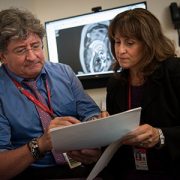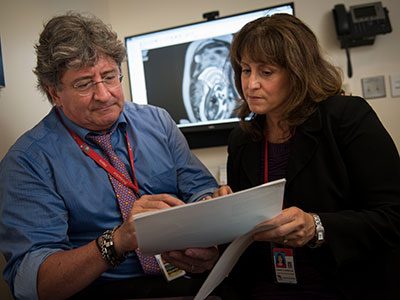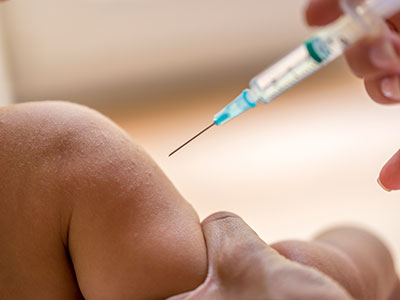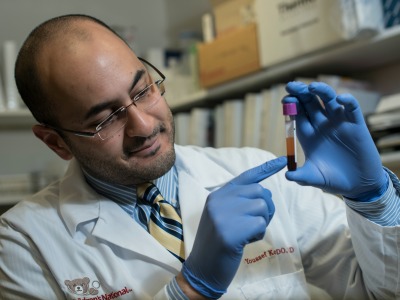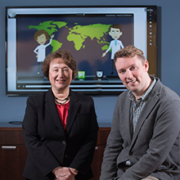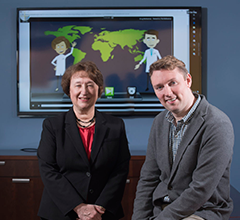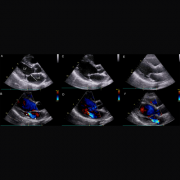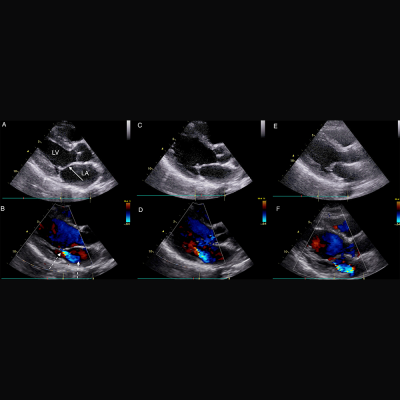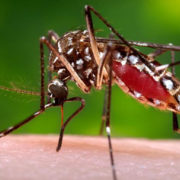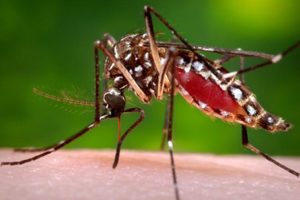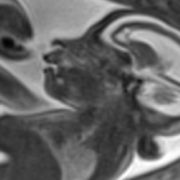Will the Zika epidemic re-emerge in 2017?

Anthony S. Fauci, M.D., director of the National Institute of Allergy and Infectious Diseases at the National Institutes of Health, discussed the possibility of a reemergence of Zika virus at Children’s National Research and Education Week.
Temperatures are rising, swelling the population of Aedes mosquitoes that transmit the Zika virus and prompting an anxious question: Will the Zika epidemic re-emerge in 2017?
Anthony S. Fauci, M.D., director of the National Institute of Allergy and Infectious Diseases at the National Institutes of Health (NIH), sketched out contrasting scenarios. Last year in Puerto Rico, at least 13 percent of residents were infected with Zika, “a huge percentage of the population to get infected in any one outbreak,” Dr. Fauci says. But he quickly adds: “That means that 87 percent of the population” did not get infected. When the chikungunya virus swept through the Caribbean during an earlier outbreak, it did so in multiple waves. “We are bracing for a return of Zika, but we shall see what happens.” Dr. Fauci says.
When it comes to the continental United States, however, previous dengue and chikungunya outbreaks were limited to southern Florida and Texas towns straddling the Mexican border. Domestic Zika transmission last year behaved in much the same fashion.
“Do we think we’re going to get an outbreak [of Zika] that is disseminated throughout the country? The answer is no,” Dr. Fauci adds. “We’re not going to see a major Puerto Rico-type outbreak in the continental United States.”
Dr. Fauci’s remarks were delivered April 24 to a standing-room-only auditorium as part of Research and Education Week, an annual celebration of the cutting-edge research and innovation happening every day at Children’s National. He offered a sweeping, fact-filled summary of Zika’s march across the globe: The virus was first isolated from a primate placed in a treehouse within Uganda’s Zika forest to intentionally become infected; Zika lurked under the radar for the first few decades, causing non-descript febrile illness; it bounced from country to country, causing isolated outbreaks; then, it transformed into an infectious disease of international concern when congenital Zika infection was linked to severe neural consequences for babies born in Brazil.

Zika virus lurked under the radar for several decades, causing non-descript febrile illness; it bounced from country to country, resulting in isolated outbreaks; then, it transformed into an infectious disease of international concern.
“I refer to Brazil and Zika as the perfect storm,” Dr. Fauci told attendees. “You have a country that is a large country with a lot of people, some pockets of poverty and economic depression – such as in the northeastern states – without good health care there, plenty of Aedes aegypti mosquitoes and, importantly, a totally immunologically naive population. They had never seen Zika before. The right mosquitoes. The right climate. The right people. The right immunological status. And then, you have the explosion in Brazil.”
In Brazil, 139 to 175 babies were born each year with microcephaly – a condition characterized by a smaller than normal skull – from 2010 to 2014. From 2015 through 2016, that sobering statistic soared to 5,549 microcephaly cases, 2,366 of them lab-confirmed as caused by Zika.
Microcephaly “was the showstopper that changed everything,” says Dr. Fauci. “All of a sudden, [Zika] went from a relatively trivial disease to a disease that had dire consequences if a mother was infected, particularly during the first trimester.”
As Zika infections soared, ultimately affecting more than 60 countries, the virus surprised researchers and clinicians a number of times, by:
- Being spread via sex
- Being transmitted via blood transfusion, a finding from Brazil that prompted the Food and Drug Administration to recommend testing for all U.S. donated blood and blood products
- Decimating developing babies’ neural stem cells and causing a constellation of congenital abnormalities, including vision problems and contractions to surviving infants’ arms and legs
- Causing Guillain-Barré syndrome
- Triggering transient hearing loss
- Causing myocarditis, heart failure and arrhythmias
When it comes to the U.S. national response, Dr. Fauci says one of the most crucial variables is how quickly a vaccine becomes available to respond to the emerging outbreak. For Zika, the research community was able to sequence the virus and launch a Phase I trial in about three months, “the quickest time frame from identification to trial in the history of all vaccinology,” he adds.
Zika is a single-stranded, enveloped RNA virus that is closely related to dengue, West Nile, Japanese encephalitis and Yellow fever viruses, which gives the NIH and others racing to produce a Zika vaccine a leg up. The Yellow fever vaccine, at 99 percent effectiveness, is one of the world’s most effective vaccines.
“I think we will wind up with an effective vaccine. I don’t want to be over confident,” Dr. Fauci says. “The reason I say I believe that we will is because [Zika is] a flavivirus, and we have been able to develop effective flavivirus vaccines. Remember, Yellow fever is not too different from Zika.”







